Just look at this statistical fact: the AR Automobile Market, initially valued at USD 1.2 billion in 2022, is on a steadfast trajectory, projected to soar to an astounding USD 14.4 billion by 2028.
This growth indicates a robust Compound Annual Growth Rate (CAGR) of 18.1% from 2023 to 2028, reflecting the burgeoning integration of AR into automotive applications.
— Market Data Forecast
In this article, we are going to explore how exactly augmented reality can be used in the Automotive industry. So, let’s dive in.
AR Car Repair Assistance
Well-known brands successfully use augmented reality for car repair assistance in service centers. Implementing an AR system allows technicians to wear smart glasses while working on vehicles.
When a technician looks at a specific part of the car, the smart glasses display a digital overlay that provides technical details, torque settings, service instructions, and other information.

AR can be utilized for different purposes.
- Error diagnostics.
- Repair processes guiding.
- Remote assistance.
- Part identification.
- Training and education.
- Safety warnings.
- Tool selection.
- Complex assemblies visualization.
By providing immediate access to information and guidance, AR can shorten the time it takes to diagnose and fix vehicle issues. Efficient repairs and diagnostics mean less time spent on each vehicle. It results in cost savings for repairing services and customers alike.
Want to build an AR/VR application?
We are ready to be your trusted technology partner with proven expertise in immersive technologies.
Let’s talkIn-Vehicle Onboarding System (IVO)
Imagine that you just purchased a new car. The model is equipped with advanced features like adaptive cruise control, lane-keeping assist, a complex infotainment system, etc. Instead of flipping through a dense owner’s manual or watching generic tutorial videos, you can simply put on AR glasses or use your AR-enabled smartphone.
You sit in the driver’s seat. At the same time, the AR system recognizes different elements of the car’s interior and begins an interactive tutorial. The steering wheel lights up through the AR interface to indicate where the hands-on detection sensors are for the assisted driving features. Then, as you glance at the dashboard, pop-up annotations explain the multi-function display’s various symbols and warnings. Isn’t it amazing?
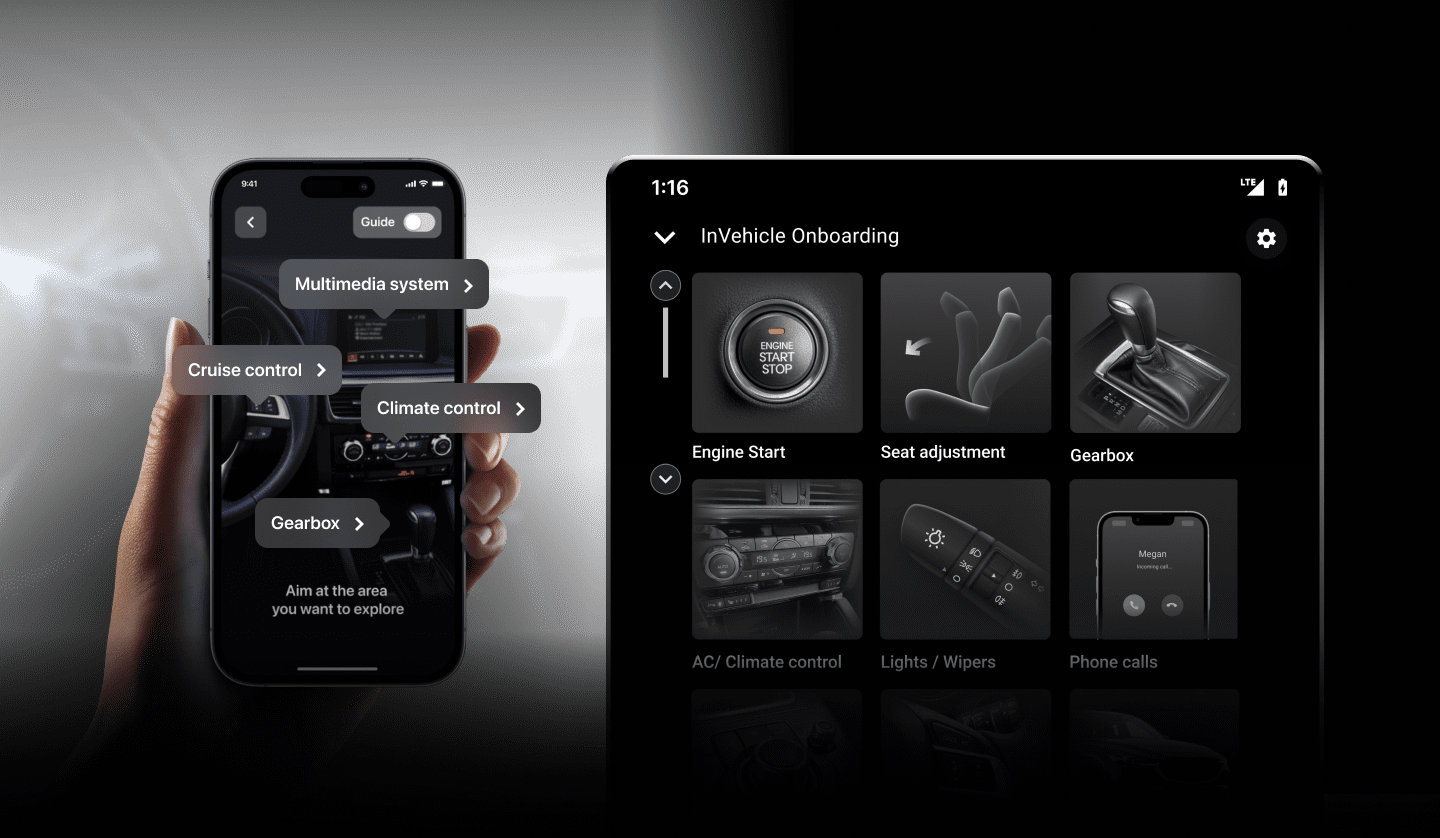
This AR-driven IVO system makes the onboarding process more engaging. Drivers understand and can fully use their car’s features from day one. It reduces the risk of overlooking essential functions and enhances the overall user experience by making technology approachable and easily digestible.
AR-Enhanced Car Showrooms
Augmented reality can transform car showrooms by offering a rich, interactive, and informative customer experience. For example, consumers can use AR to visualize different color options, wheel designs, and interior trims on a showroom model, allowing them to see their customizations in real-time. Let’s take a quick look at other AR applications.
- Highlighting and explaining advanced features of a vehicle.
- Providing interactive displays that come to life when viewed through a tablet or smartphone.
- Showcasing different configurations and options that might not be physically present in the showroom.
- Offering customers a 360-degree view of a vehicle, both inside and out.
- Displaying more models than the physical space allows.
- Conveying the brand’s heritage and stories behind specific car models.
AR Jaguar Car Showroom – project we developed, read more
By pointing an AR device at certain car parts, customers can get instant information on what they’re interested in, reducing the need for salesperson assistance. Moreover, even when the showroom is closed, potential clients can use AR-enabled window shopping to explore vehicles on display.
All these applications provide customers with a more personalized, informative, and engaging experience, potentially enhancing customer satisfaction, increasing sales, and creating a deeper emotional connection with the target audience.
Mind-blowing AR/VR ideas can’t wait
We use the latest immersive technologies for creating apps to exceed our clients’ expectations.
Drop us a lineNew Product Design & Prototyping
Prominent car manufacturers implement AR into their design and development process. For instance, designers and engineers can wear AR headsets that overlay digital models of new car designs onto a life-size clay model.
This approach allows specialists to visualize changes instantly and assess different design elements, such as the body’s shape, the placement of lights, and the car’s interior features, without needing to alter the clay model physically. It’s a process that melds the tactile feedback of a traditional clay model with the flexibility of digital designs.
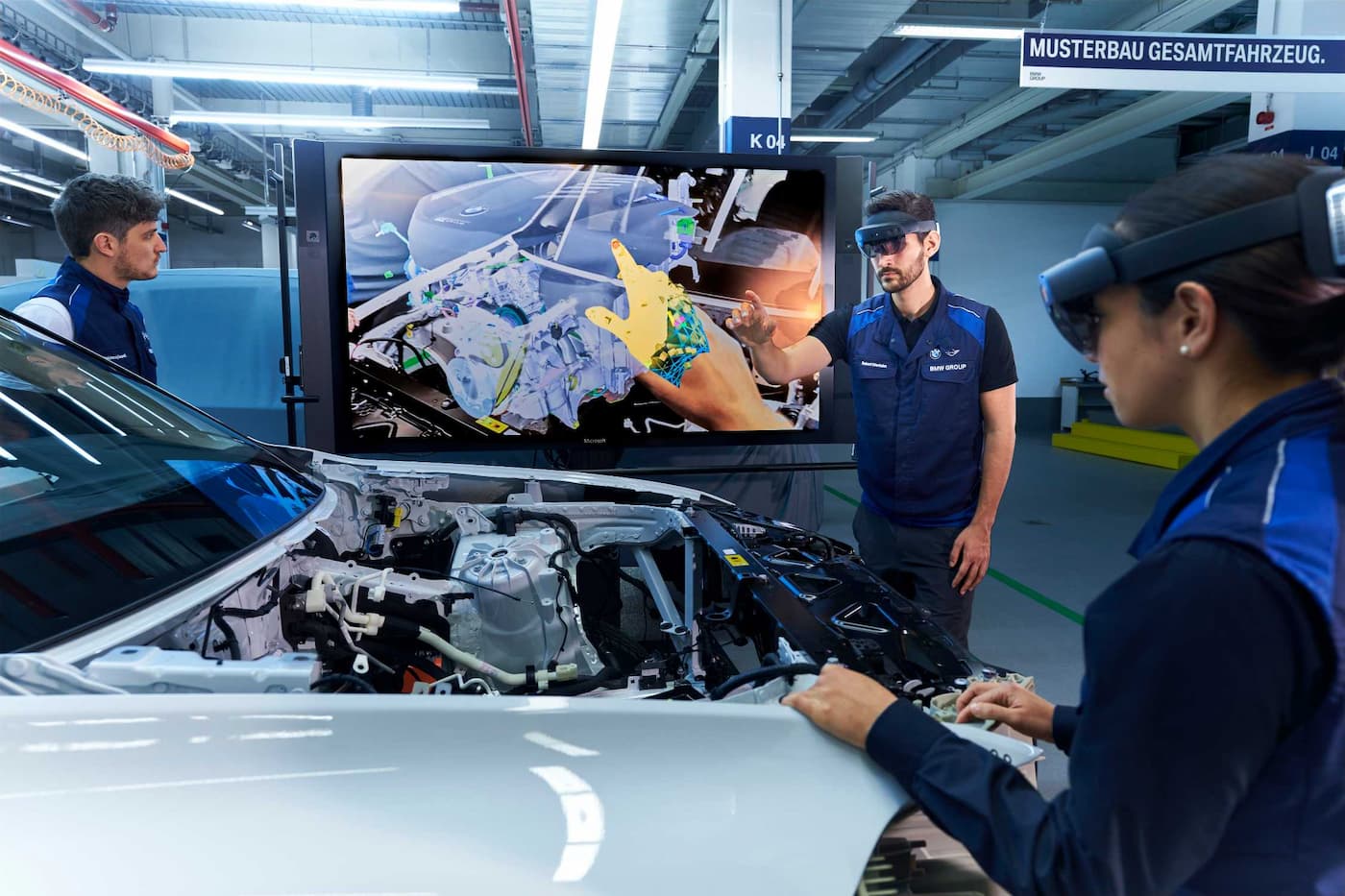
Using AR, designers can experiment with materials and find the best options for the new product. Teams across different locations can view and work on the same AR model in real time. Additionally, the AR system allows for remote viewing, enabling stakeholders worldwide to participate in the design process and provide immediate feedback without traveling to the design studio.
Vehicle Assembly Optimization
Augmented reality is revolutionizing the automotive industry, particularly in vehicle assembly. Precision and efficiency are paramount here. AR can be used with different goals.
- Assembly instructions overlay.
- Quality control assistance.
- Instant feedback to workers.
- Layout planning.
- Interactive training for new employees.
- Collaborative work with digital instructions.
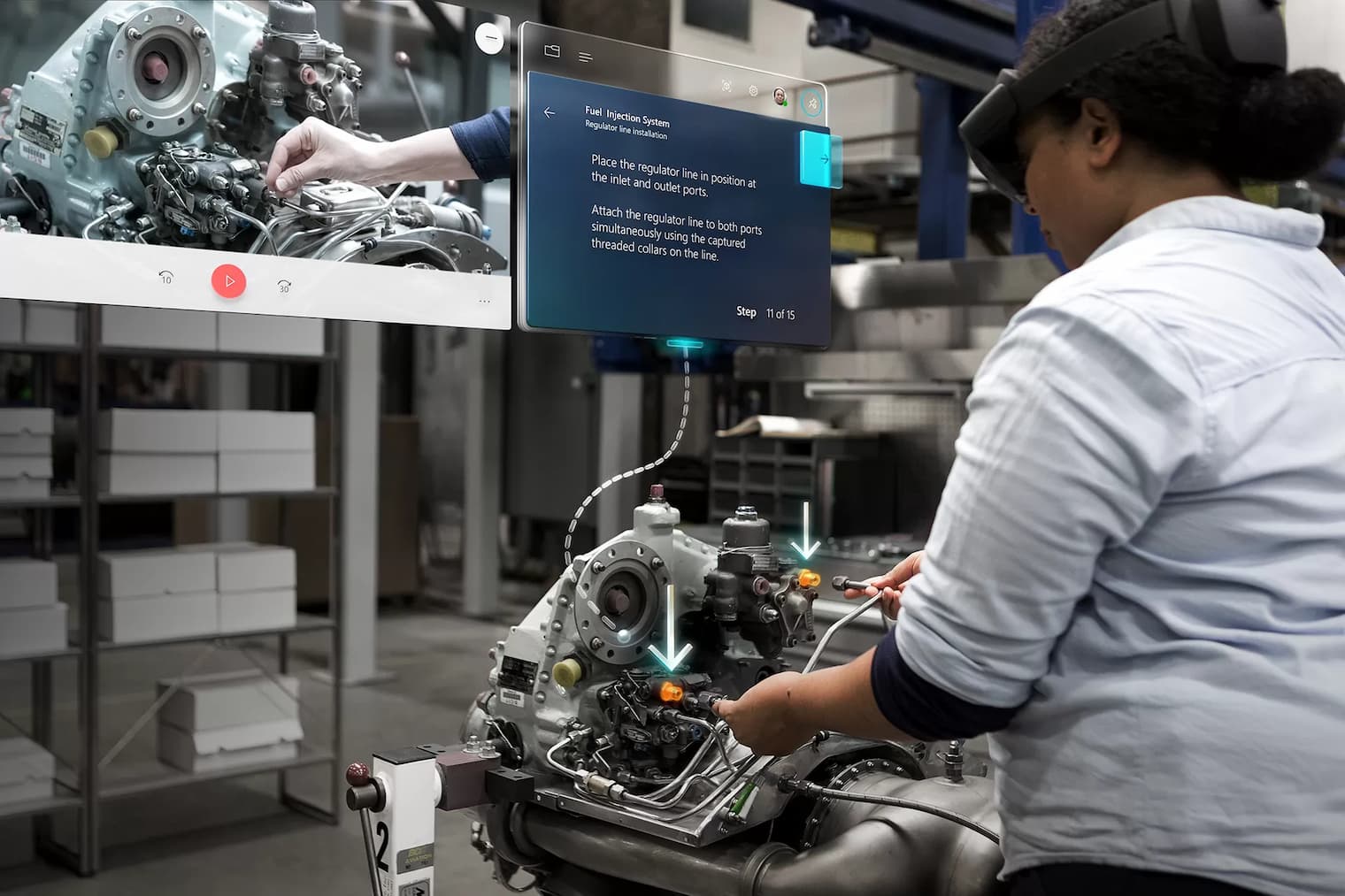
AR’s impact extends beyond mere productivity gains. It represents a fundamental shift in how automotive assembly is approached, making it smarter, safer, and more sustainable. With AR, the future of vehicle assembly is not just about doing things faster but doing them smarter.
Summing Up
The use of AR in the automotive industry represents a monumental shift in the way vehicles are designed and manufactured. It is transforming traditional processes into innovative, futuristic experiences.
From enhancing vehicle design and prototyping with detailed 3D models to revolutionizing vehicle repair assistance with interactive manuals and diagnostics, AR is an invaluable asset.
As the technology continues to evolve, it’s clear that AR’s role in the automotive sector will only deepen, driving the industry toward a more efficient, accurate, and user-centric future.
Bring your bold ideas to life with our augmented reality development team. Contact us and let’s discuss the details!

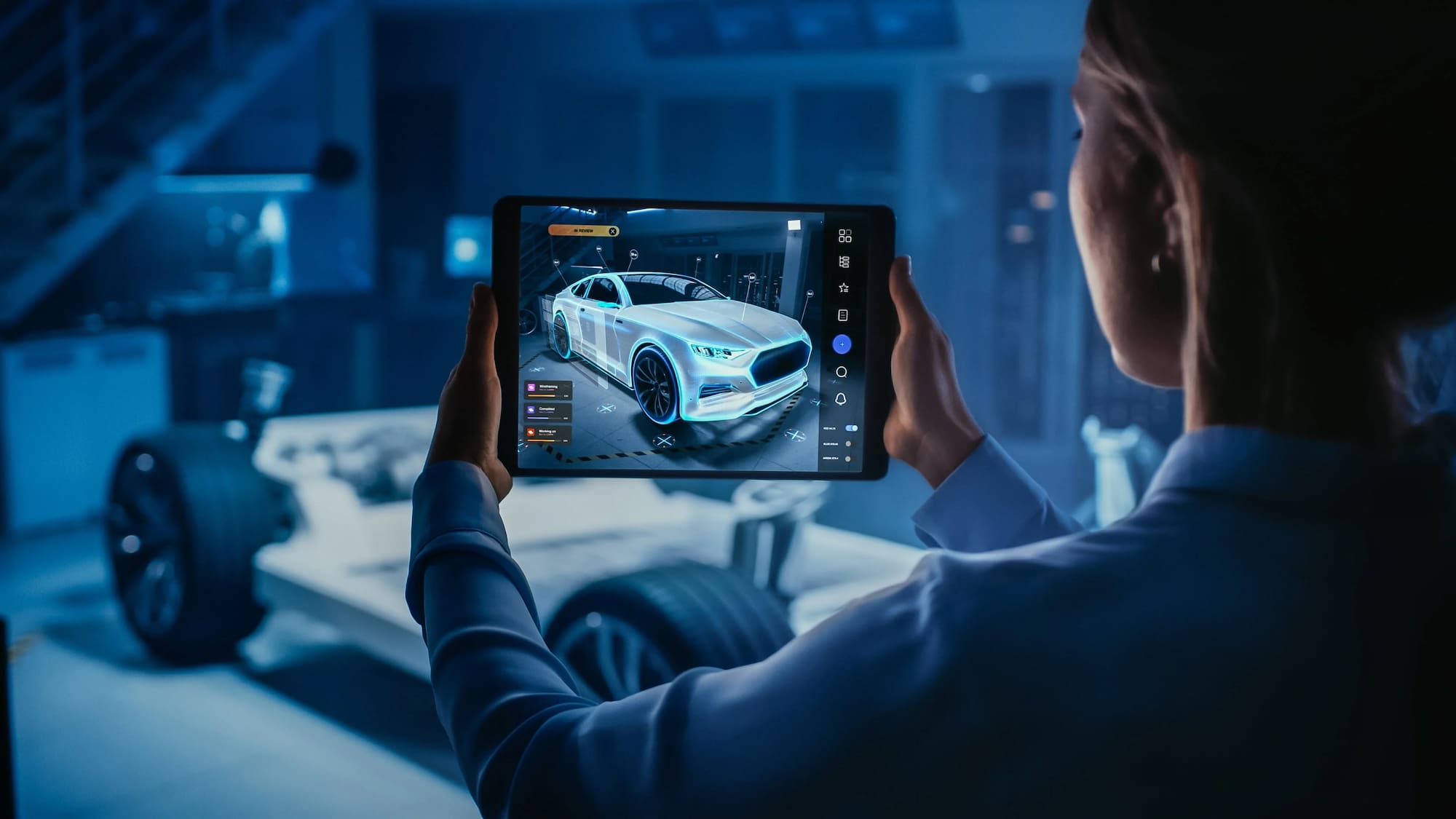



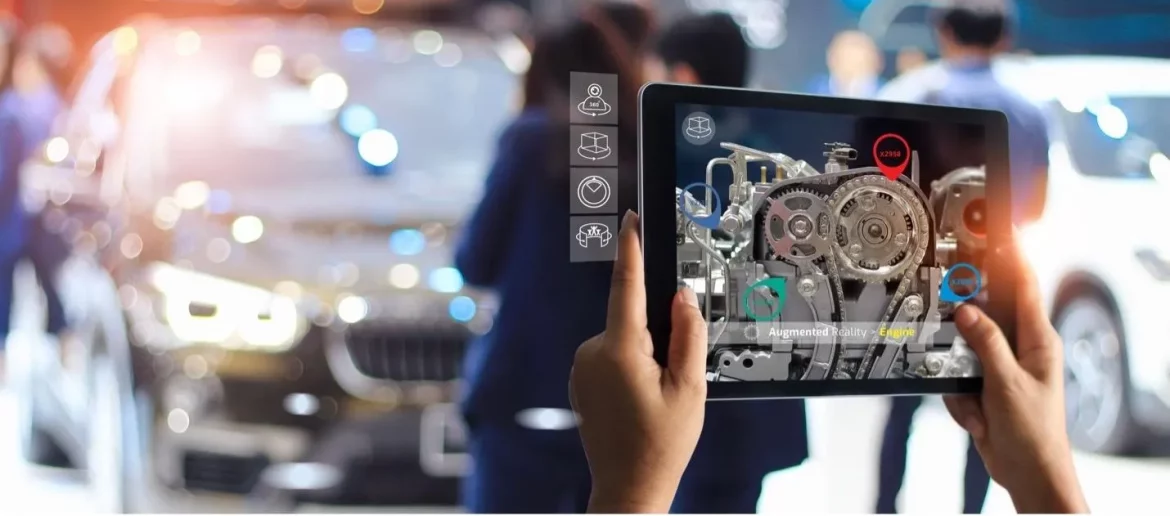
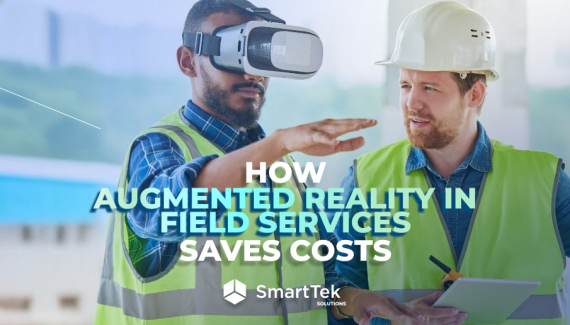 view the post
view the post
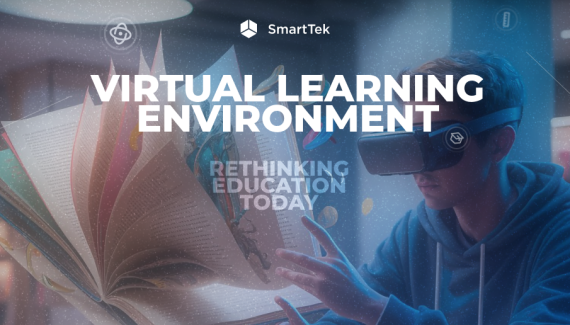 view the post
view the post
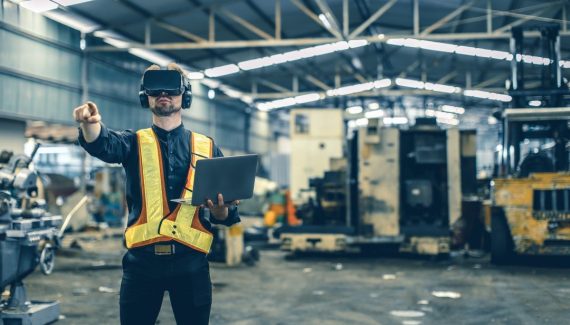 view the post
view the post

